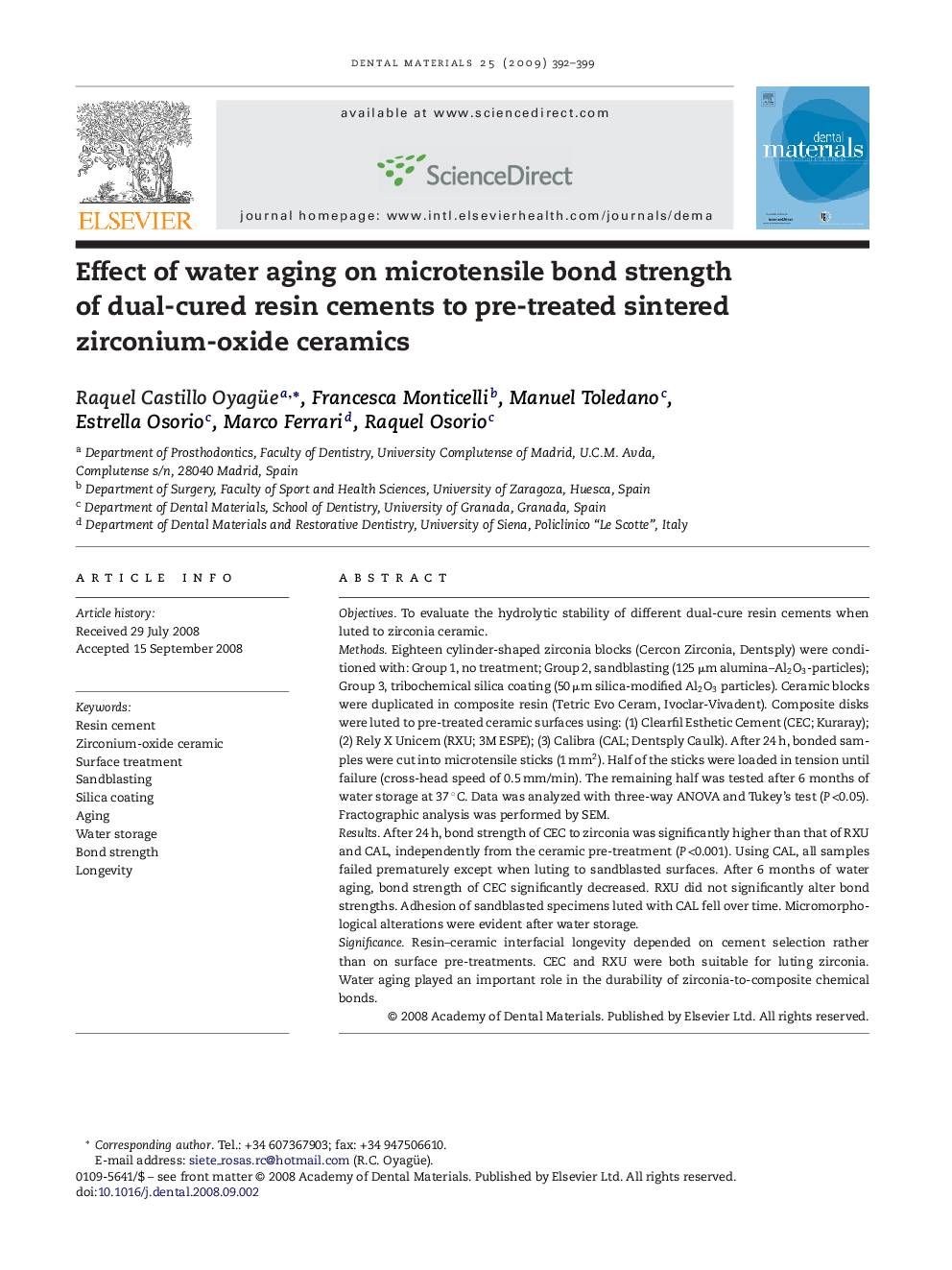| Article ID | Journal | Published Year | Pages | File Type |
|---|---|---|---|---|
| 1422428 | Dental Materials | 2009 | 8 Pages |
ObjectivesTo evaluate the hydrolytic stability of different dual-cure resin cements when luted to zirconia ceramic.MethodsEighteen cylinder-shaped zirconia blocks (Cercon Zirconia, Dentsply) were conditioned with: Group 1, no treatment; Group 2, sandblasting (125 μm alumina–Al2O3-particles); Group 3, tribochemical silica coating (50 μm silica-modified Al2O3 particles). Ceramic blocks were duplicated in composite resin (Tetric Evo Ceram, Ivoclar-Vivadent). Composite disks were luted to pre-treated ceramic surfaces using: (1) Clearfil Esthetic Cement (CEC; Kuraray); (2) Rely X Unicem (RXU; 3M ESPE); (3) Calibra (CAL; Dentsply Caulk). After 24 h, bonded samples were cut into microtensile sticks (1 mm2). Half of the sticks were loaded in tension until failure (cross-head speed of 0.5 mm/min). The remaining half was tested after 6 months of water storage at 37 °C. Data was analyzed with three-way ANOVA and Tukey’s test (P <0.05). Fractographic analysis was performed by SEM.ResultsAfter 24 h, bond strength of CEC to zirconia was significantly higher than that of RXU and CAL, independently from the ceramic pre-treatment (P <0.001). Using CAL, all samples failed prematurely except when luting to sandblasted surfaces. After 6 months of water aging, bond strength of CEC significantly decreased. RXU did not significantly alter bond strengths. Adhesion of sandblasted specimens luted with CAL fell over time. Micromorphological alterations were evident after water storage.SignificanceResin–ceramic interfacial longevity depended on cement selection rather than on surface pre-treatments. CEC and RXU were both suitable for luting zirconia. Water aging played an important role in the durability of zirconia-to-composite chemical bonds.
